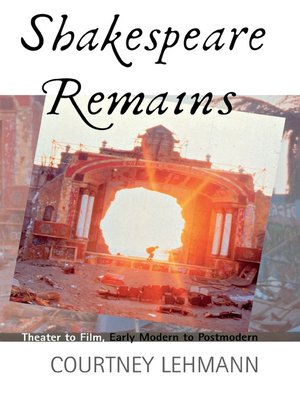
Sign up to save your library
With an OverDrive account, you can save your favorite libraries for at-a-glance information about availability. Find out more about OverDrive accounts.
Find this title in Libby, the library reading app by OverDrive.



Search for a digital library with this title
Title found at these libraries:
| Library Name | Distance |
|---|---|
| Loading... |
No literary figure has proved so elusive as Shakespeare. How, Courtney Lehmann asks, can the controversies surrounding the Bard's authorship be resolved when his works precede the historical birth of that modern concept? And how is it that Shakespeare remains such a powerful presence today, years after poststructuralists hailed the "death of the author"? In her cogent book, Lehmann reexamines these issues through a new lens: film theory.
An alternative to literary models that either minimize or exalt the writer's creative role, film theory, in Lehmann's view, perceives authorship as a site of constitutive conflict, generating in the process the notion of the auteur. From this perspective, she offers close readings of Romeo and Juliet, A Midsummer Night's Dream, and Hamlet, of film adaptations by Kenneth Branagh, Baz Luhrmann, and Michael Almereyda, and of John Madden's Shakespeare in Love. In their respective historical contexts, these plays and films emerge as allegories of authorship, exploiting such strategies as appropriation, adaptation, projection, and montage. Lehmann explores the significance of this struggle for agency, both in Shakespeare's time and in the present day, in the cultures of early and late capitalism.
By projecting film theory from the postmodern to the early modern and back again, Lehmann demonstrates the ways in which Shakespeare emerges as a special effect—indeed, as an auteur—in two cultures wherein authors fear to tread.







